The antifibrotic potential of IMT504: modulation of GLAST + Wnt1 + bone marrow stromal progenitors and hepatic microenvironment
- PMID: 39227908
- PMCID: PMC11373403
- DOI: 10.1186/s13287-024-03896-w
The antifibrotic potential of IMT504: modulation of GLAST + Wnt1 + bone marrow stromal progenitors and hepatic microenvironment
Abstract
Background: The immunomodulatory oligodeoxynucleotide (ODN) IMT504 might harbor antifibrotic properties within the liver.
Methods: Fibrosis models were induced in mice through thioacetamide (TAA) administration and bile-duct ligation. Cre-loxP mice were utilized to identify GLAST + Wnt1 + bone marrow stromal progenitors (BMSPs) and to examine their contribution with cells in the liver. In vivo and in vitro assays; flow-cytometry, immunohistochemistry, and qPCR were conducted.
Results: IMT504 demonstrated significant inhibition of liver fibrogenesis progression and reversal of established fibrosis. Early responses to IMT504 involved the suppression of profibrogenic and proinflammatory markers, coupled with an augmentation of hepatocyte proliferation. Additionally, this ODN stimulated the proliferation and mobilization of GLAST + Wnt1 + BMSPs, likely amplifying their contribution with endothelial- and hepatocytes-like cells. Moreover, IMT504 significantly modulated the expression levels of Wnt ligands and signaling pathway/target genes specifically within GLAST + Wnt1 + BMSPs, with minimal impact on other BMSPs. Intriguingly, both IMT504 and conditioned media from IMT504-pre-treated GLAST + Wnt1 + BMSPs shifted the phenotype of fibrotic macrophages, hepatic stellate cells, and hepatocytes, consistent with the potent antifibrotic effects observed.
Conclusion: In summary, our findings identify IMT504 as a promising candidate molecule with potent antifibrotic properties, operating through both direct and indirect mechanisms, including the activation of GLAST + Wnt1 + BMSPs.
Keywords: Bone marrow stromal progenitors; GLAST; Hepatic stellate cells; Hepatocytes; Immunomodulation; Liver progenitors; Macrophages; Plasticity; Wnt.
© 2024. The Author(s).
Conflict of interest statement
The authors declare no competing interests.
Figures
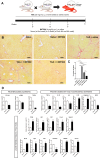
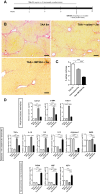
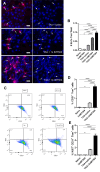
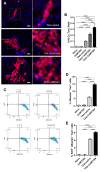



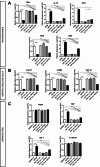
Similar articles
-
Contribution of neural crest and GLAST+ Wnt1+ bone marrow pericytes with liver fibrogenesis and/or regeneration.Liver Int. 2020 Apr;40(4):977-987. doi: 10.1111/liv.14401. Epub 2020 Feb 21. Liver Int. 2020. PMID: 32011099
-
Involvement of hepatic macrophages in the antifibrotic effect of IGF-I-overexpressing mesenchymal stromal cells.Stem Cell Res Ther. 2016 Nov 22;7(1):172. doi: 10.1186/s13287-016-0424-y. Stem Cell Res Ther. 2016. PMID: 27876093 Free PMC article.
-
Integrin alphavbeta6 is a marker of the progression of biliary and portal liver fibrosis and a novel target for antifibrotic therapies.J Hepatol. 2008 Mar;48(3):453-64. doi: 10.1016/j.jhep.2007.11.021. Epub 2008 Jan 14. J Hepatol. 2008. PMID: 18221819
-
Jaceosidin attenuates the progression of hepatic fibrosis by inhibiting the VGLL3/HMGB1/TLR4 signaling pathway.Phytomedicine. 2024 Jun;128:155502. doi: 10.1016/j.phymed.2024.155502. Epub 2024 Mar 10. Phytomedicine. 2024. PMID: 38489889
-
Diverse cellular origins of adult blood vascular endothelial cells.Dev Biol. 2021 Sep;477:117-132. doi: 10.1016/j.ydbio.2021.05.010. Epub 2021 May 26. Dev Biol. 2021. PMID: 34048734 Review.
References
-
- Fiore EJ, Bayo JM, Garcia MG, Malvicini M, Lloyd R, Piccioni F, Rizzo M, Peixoto E, Sola MB, Atorrasagasti C, Alaniz L, Camilletti MA, Enguita M, Prieto J, Aquino JB, Mazzolini G. Mesenchymal stromal cells engineered to produce IGF-I by recombinant adenovirus ameliorate liver fibrosis in mice. Stem Cells Dev. 2015;24(6):791–801. 10.1089/scd.2014.0174. 10.1089/scd.2014.0174 - DOI - PMC - PubMed
-
- Baccin C, Al-Sabah J, Velten L, Helbling PM, Grunschlager F, Hernandez-Malmierca P, Nombela-Arrieta C, Steinmetz LM, Trumpp A, Haas S. Combined single-cell and spatial transcriptomics reveal the molecular, cellular and spatial bone marrow niche organization. Nat Cell Biol. 2020;22(1):38–48. 10.1038/s41556-019-0439-6. 10.1038/s41556-019-0439-6 - DOI - PMC - PubMed
-
- Baryawno N, Przybylski D, Kowalczyk MS, Kfoury Y, Severe N, Gustafsson K, Kokkaliaris KD, Mercier F, Tabaka M, Hofree M, Dionne D, Papazian A, Lee D, Ashenberg O, Subramanian A, Vaishnav ED, Rozenblatt-Rosen O, Regev A, Scadden DT. A Cellular Taxonomy of the bone marrow stroma in Homeostasis and Leukemia. Cell. 2019;177(7):1915–32. 10.1016/j.cell.2019.04.040. e1916. 10.1016/j.cell.2019.04.040 - DOI - PMC - PubMed
MeSH terms
Substances
Grants and funding
LinkOut - more resources
Full Text Sources
Medical

